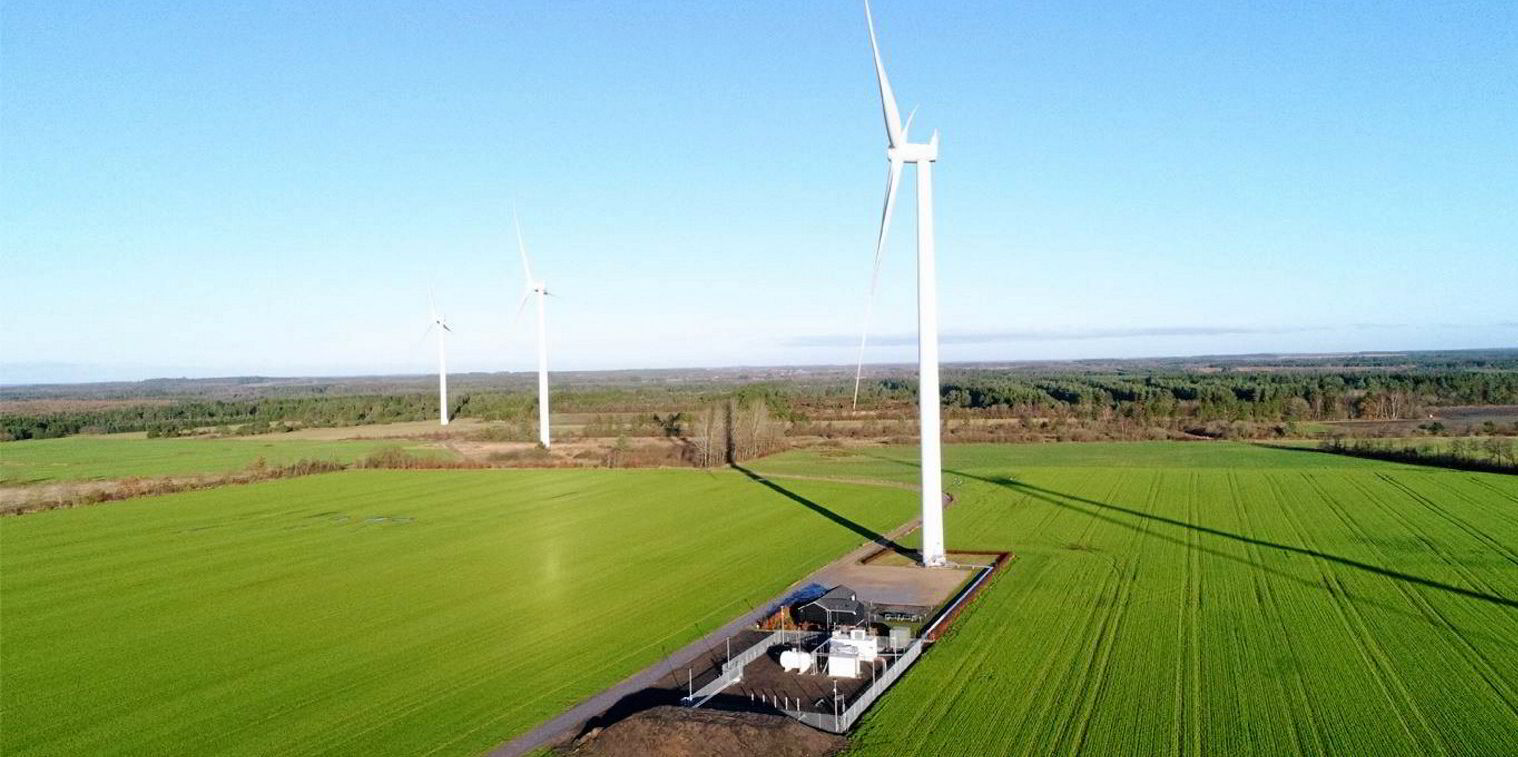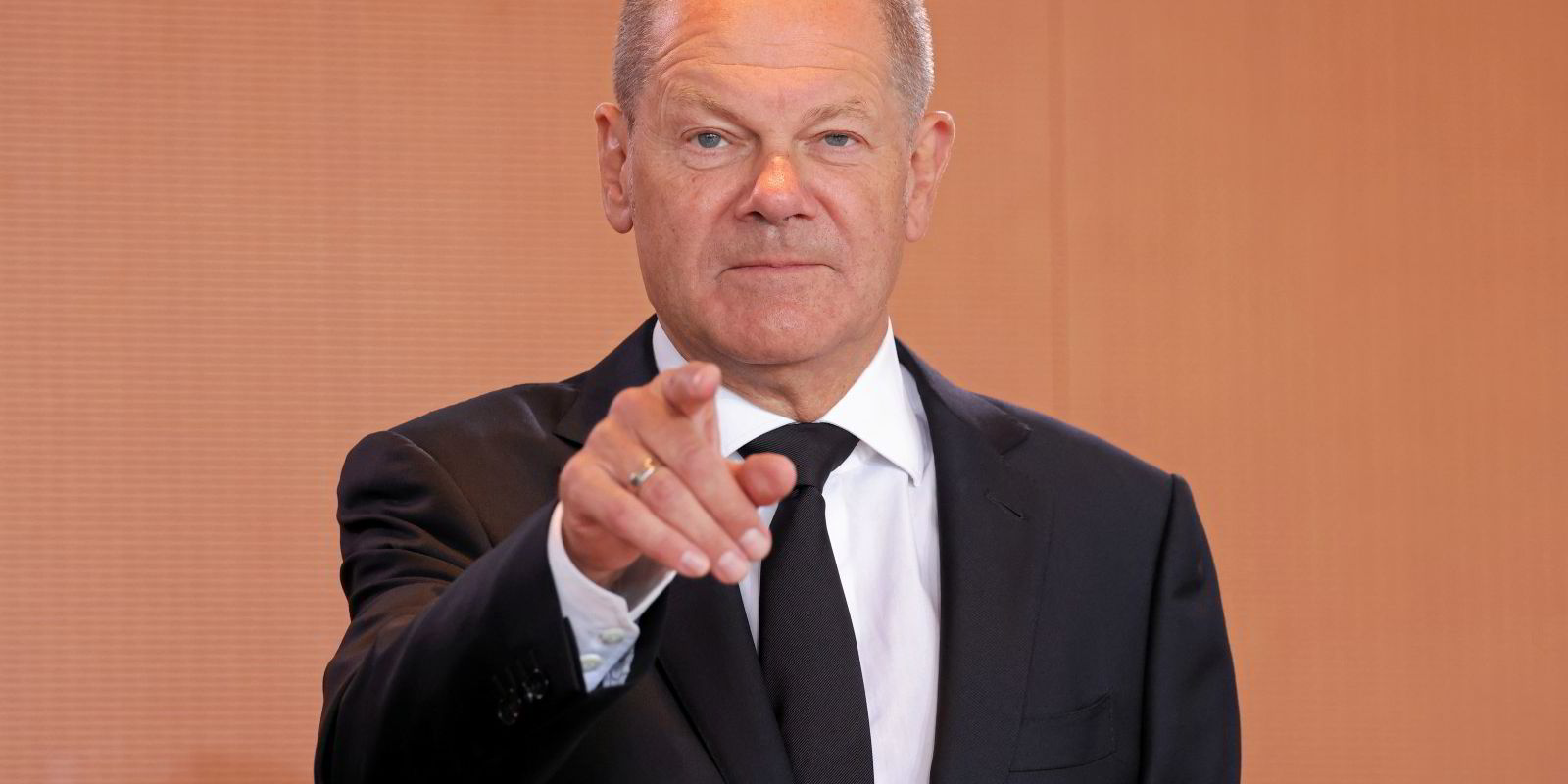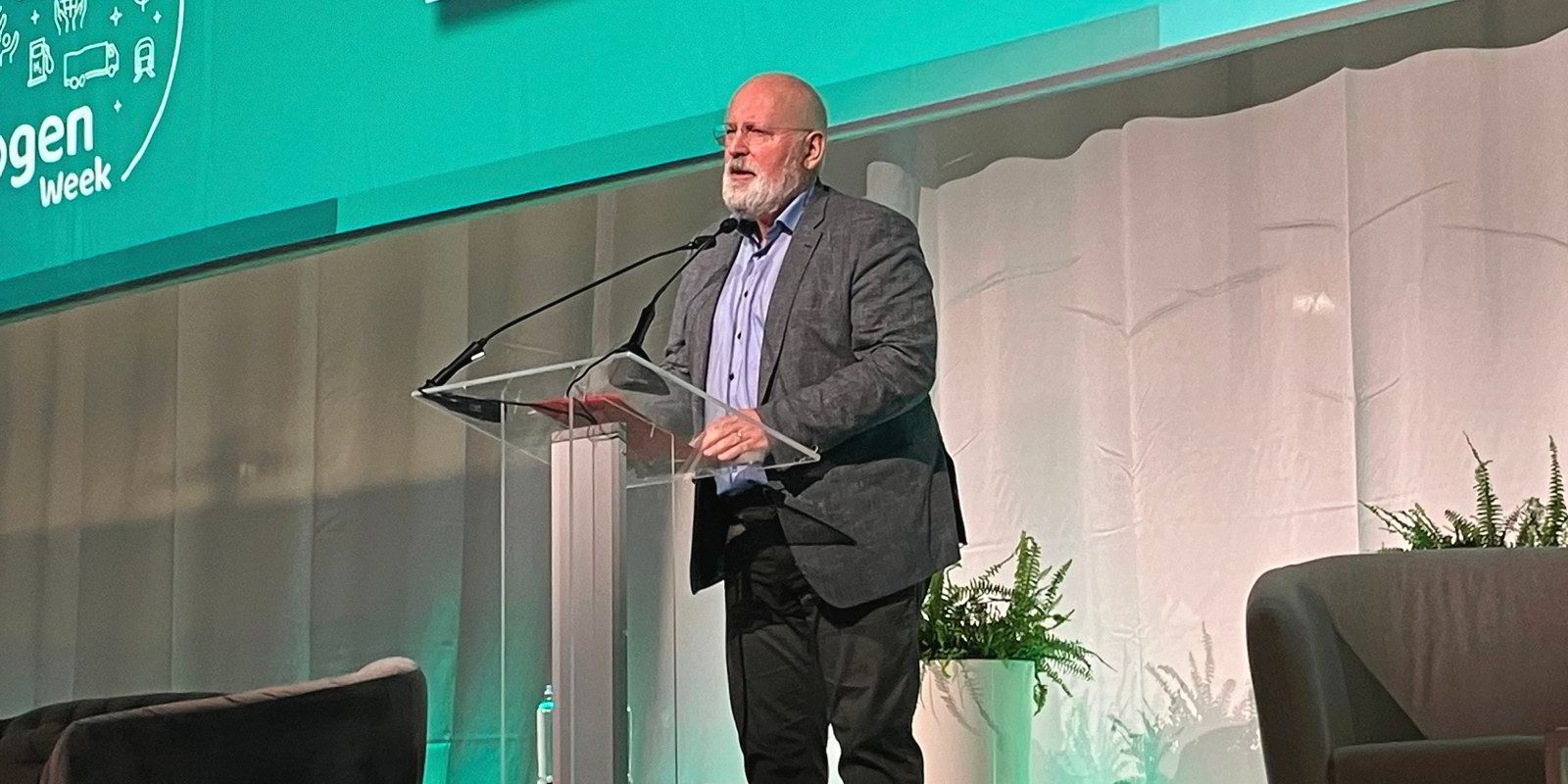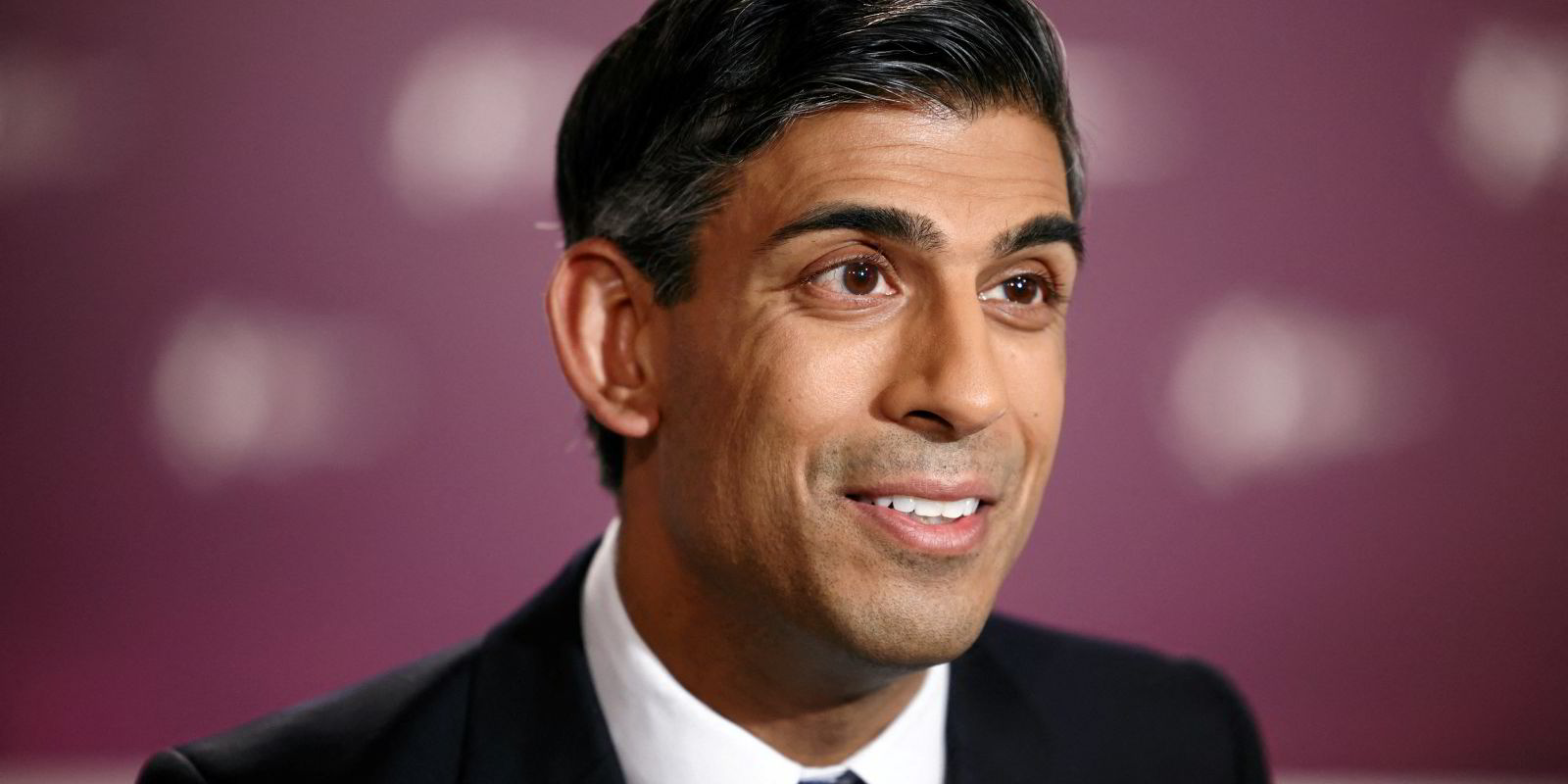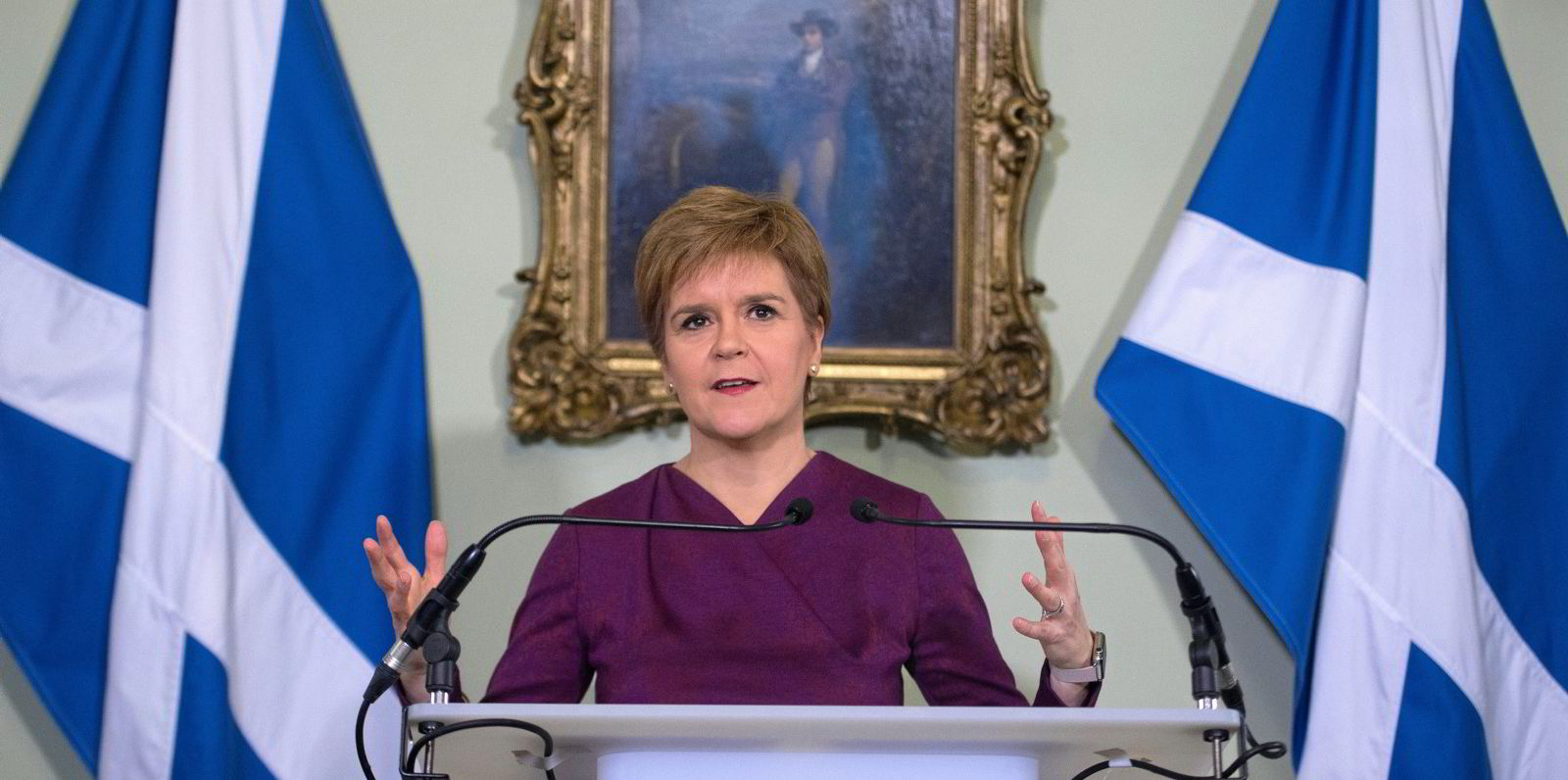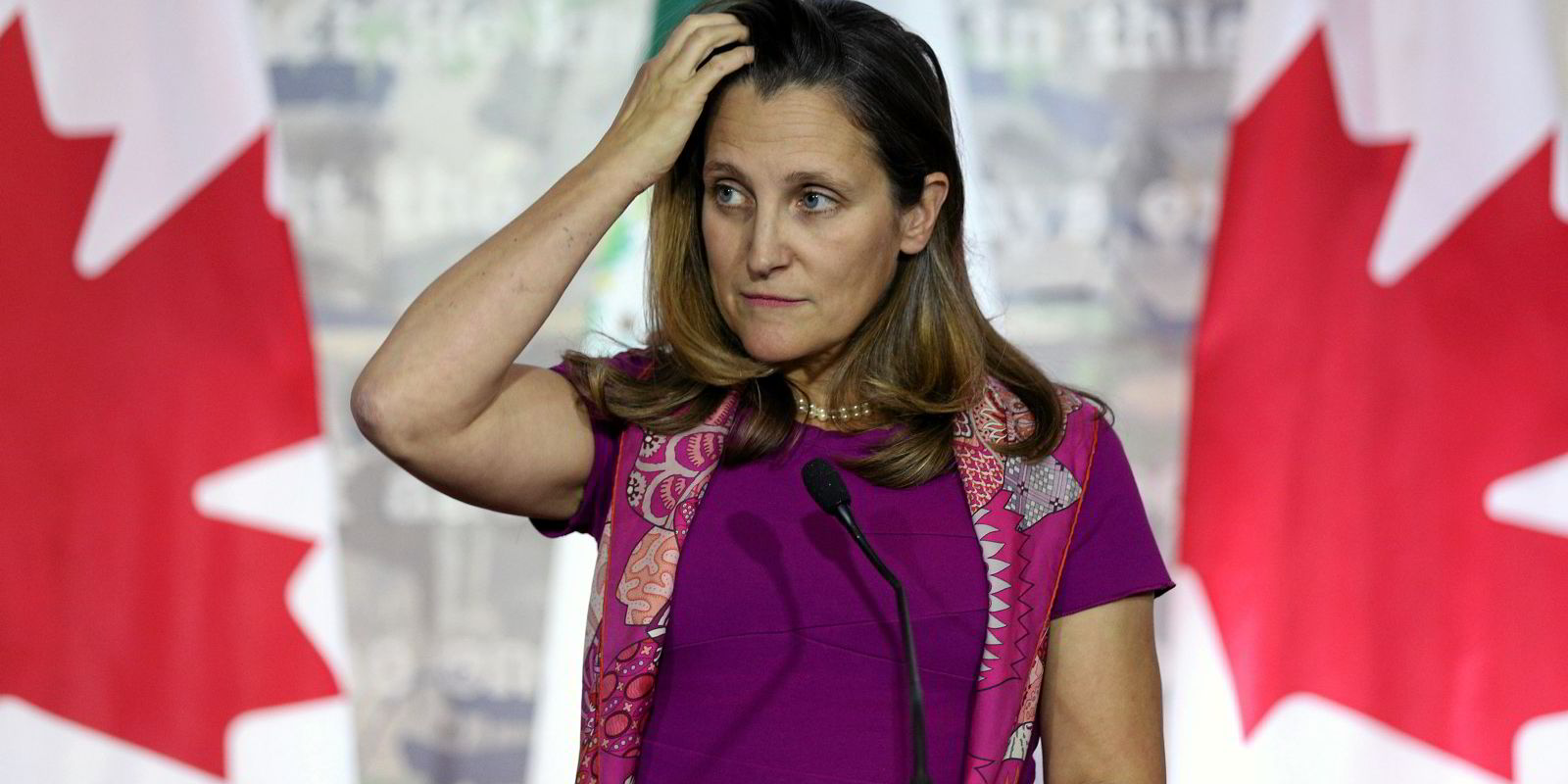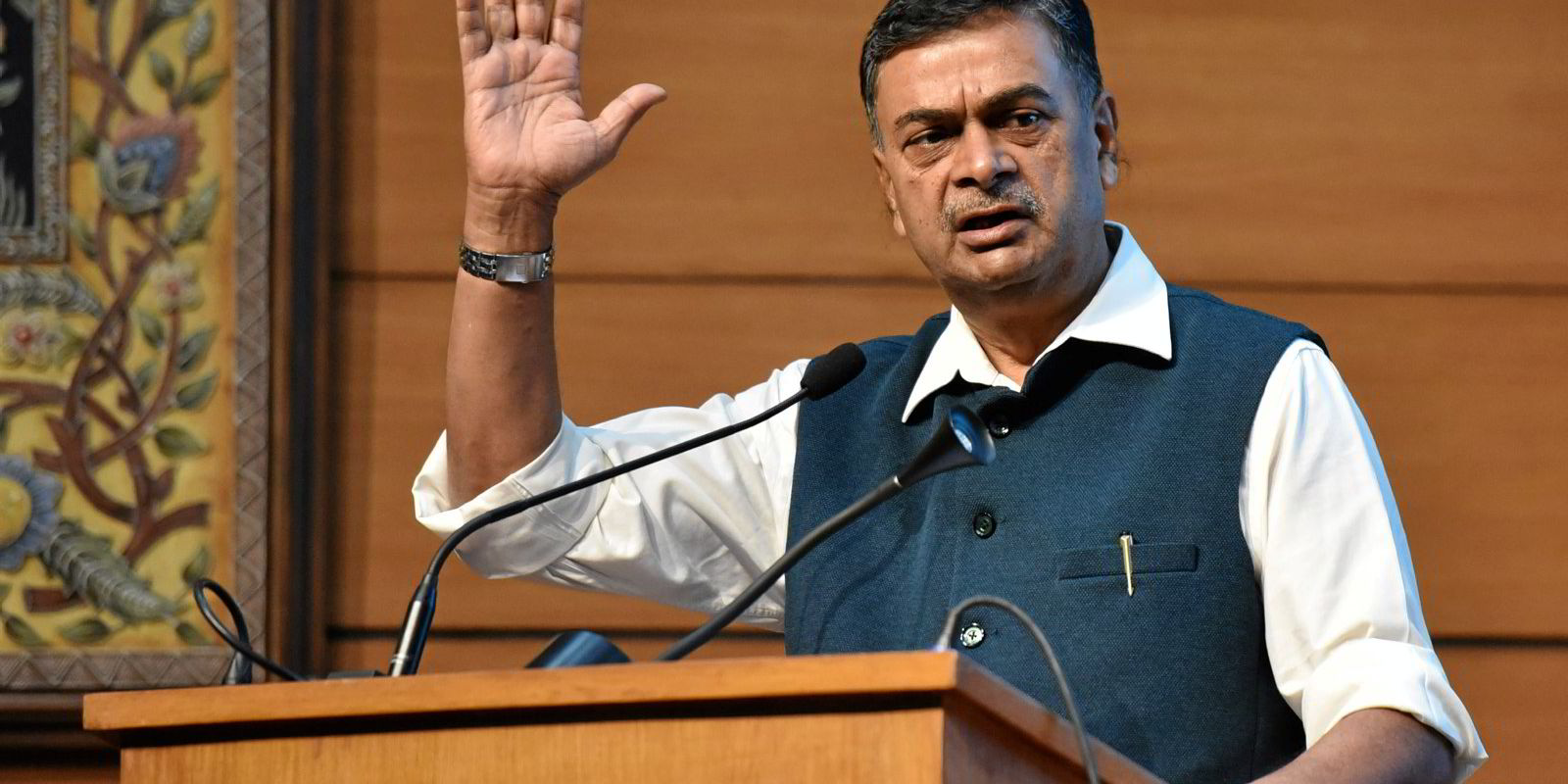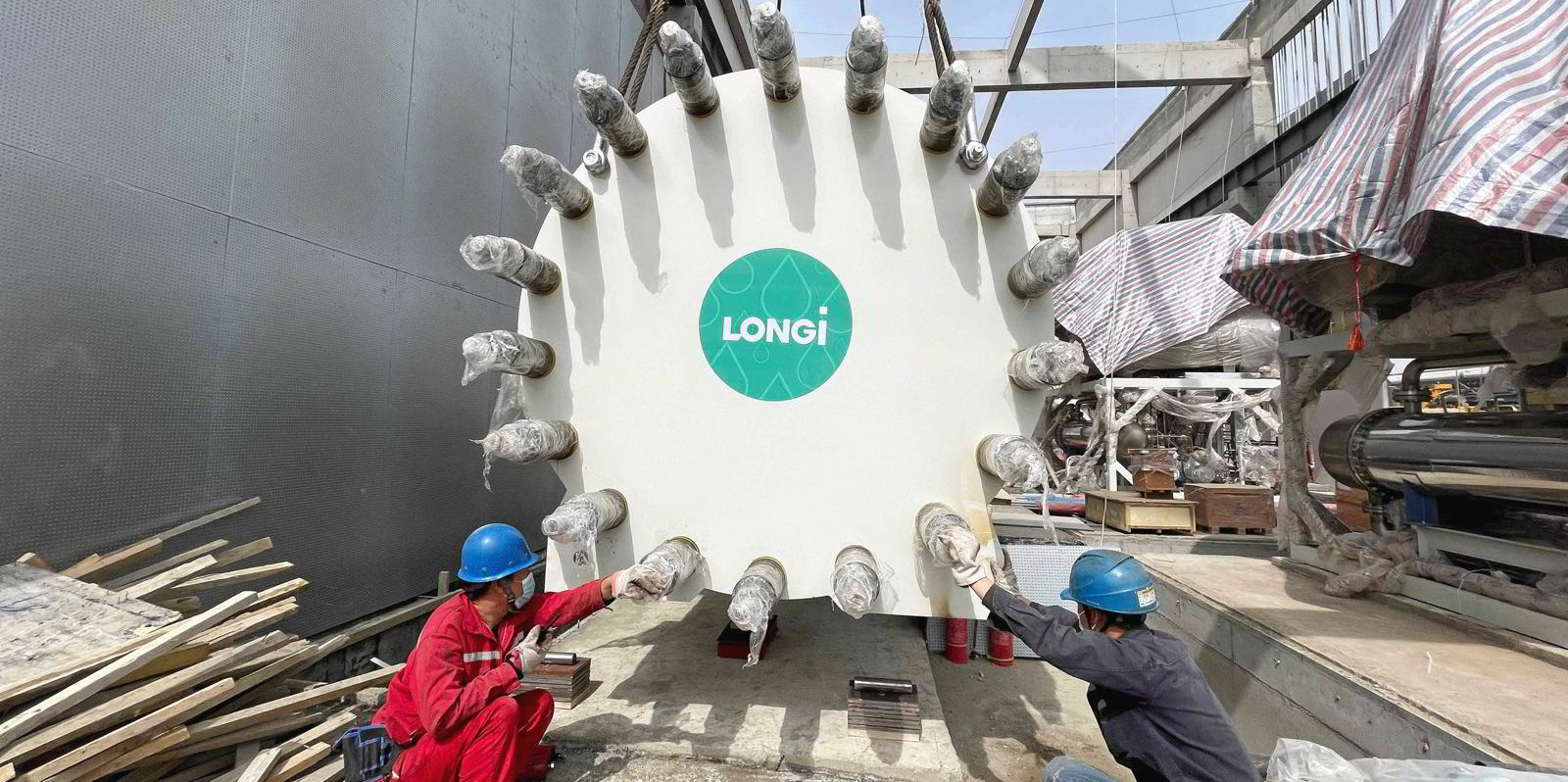The next 12 months will transform the global green hydrogen industry from a much-discussed idea to large-scale reality, with a wave of government subsidy schemes entering into force that will virtually guarantee profitability for renewable H2 projects which will in turn need huge amounts of clean power to operate.
The most significant support programme will almost certainly be the US hydrogen tax credits — unveiled in last year’s Inflation Reduction Act — which would pay producers up to $3 per kilogram of green H2. But Contracts for Difference (CfD) subsidy programmes from the EU and UK are also due to begin this year, along with Germany’s H2Global scheme, which will provide financial support for clean hydrogen (and its derivatives) imported from outside the EU.
In addition, Canada said it will unveil a hydrogen tax credit scheme in the spring of 2023; Oman will unveil the winners of its first green hydrogen tender in March, and its second in December; India is expected to unveil a new subsidy programme in the coming months; Norway has agreed in principle to introduce a CfD scheme this year; while China is set to significantly expand its green H2 output in 2023.
Very little, if any, government cash is expected to enter producers’ bank accounts this year due to the simple fact that money will be paid out for H2 production or usage rather than project construction — and projects may take many months or years to become operational.
On top of this, most of the subsidy schemes are yet to be finalised and it is not clear exactly when they will be.
However, many large-scale green hydrogen projects will almost certainly reach final investment decisions this year on the back of the subsidies, with construction beginning by the end of 2023 — with billions of dollars flowing to businesses, including contractors, advisors and manufacturers of electrolysis equipment, wind turbines and solar panels.
And let’s not forget that despite all the talk about clean hydrogen in recent years, only 270MW of green H2 projects are currently in operation, despite a staggering 957GW having been announced according to UK analyst Aurora Energy Research.
So where do all the different green hydrogen subsidy schemes stand today?
US H2 tax credits
The Inflation Reduction Act, which was signed into law by President Joe Biden on 16 August 2022, offers tax credits of up to $3/kg to US clean hydrogen producers for the first ten years of a project’s lifetime.
The size of the tax credit depends on the lifecycle greenhouse gas emissions of each project, as well as how much staff are paid (see panel at end of article for details).
The maximum tax credit would effectively make green hydrogen cheaper to produce than grey H2 made from unabated fossil gas in most of the US and the world, according to cost estimates from analyst Platts.
The final details of the subsidy scheme are still being devised by the US government, including rules on the temporal correlation of renewable energy and H2 production — but these are expected to be revealed in the coming months.
However, they could be delayed somewhat as the EU, Norway, Australia and South Korea have officially complained to the US government that the Inflation Reduction Act — which includes a host of climate-reduction measures and associated subsidies — breaches international trade rules by giving preferential treatment to US-made products.
A high-level EU-US Inflation Reduction Act Task Force has been set up in an attempt to head off a potentially damaging trade battle between the two over the subsidies, which has so far seen modest success, while President Biden has also pledged to “tweak glitches” in the act.
But the notion that the US can make changes to the law — as requested by the EU — seems highly unlikely given the initial struggle to get all Democratic senators on board and the fact that the Republican lawmakers have taken control of the House of Representatives.
However, the US is still expected to be the most attractive market for green hydrogen production in 2023, due to both the tax credits and the $9.5bn of federal cash made available for the development of clean H2 in the Infrastructure Investment and Jobs Act, passed by the US in 2021.
This includes $8bn — to be allocated in the fiscal years 2022-26 — to help establish at least four regional clean hydrogen hubs, which the infrastructure bill defines as “network[s] of clean hydrogen producers, potential clean hydrogen consumers, and connective infrastructure located in close proximity... that can be developed into a national clean hydrogen network to facilitate a clean hydrogen economy”.
EU’s Carbon Contracts for Difference
The European Commission announced in May 2022 that it will roll out Carbon Contracts for Difference (CCfD) subsides for green hydrogen using cash from its Innovation Fund “to support a full switch of the existing hydrogen production in industrial processes from natural gas to renewables and the transition to hydrogen-based production processes in new industrial sectors such as steel-making”.
This has been designed to help meet the EU’s target of producing ten million tonnes of green hydrogen annually inside the bloc by 2030, and importing a further ten million tonnes by the same date
Under this scheme, end users (rather than producers) would be paid a guaranteed amount by governments for avoiding CO2 emissions. This would consist of savings made by not paying a carbon price under the EU’s Emissions Trading System (ETS), plus a top-up subsidy to reach the “strike price” agreed in the CCfD.
The amount actually paid by governments would therefore depend on the fluctuating ETS carbon price, and would mean that if it exceeded the strike price, end users would actually pay the difference back to the government.
The final details of the green H2 scheme were due to be published last year, but was delayed after the European Parliament voted against the European Commission’s proposal for hourly proof of dedicated renewable energy supply to electrolysers.
A new compromise draft proposal — to allow quarterly matching of dedicated renewable energy supply to hydrogen production until 2028, which would then be replaced with hour-by-hour correlation — was widely expected to be officially unveiled in mid-December, but the year ended with no word on the matter.
This proposed rules would still need to be officially agreed by the 27 member states and the European Parliament, but the Commission is keen to get the CCfD scheme implemented as soon as possible to give the bloc a fighting chance of reaching its target of producing ten million tonnes of green hydrogen annually by 2030.
The rules are also expected to apply to renewable H2 imported into the EU.
On top of all this, the EU gave the go-ahead in September for member states to subsidise 3.5GW of new electrolysis capacity under the Hy2Use programme.
Germany's H2Global
Germany’s multi-billion-euro H2Global green hydrogen subsidy programme — which is only available to H2 (and derivatives) imported into the EU — is the most advanced of all the schemes, but funding is not expected to start flowing to producers until 2024 at the earliest.
Last month, the German government unveiled two tenders for imported renewable hydrogen derivatives — one for green ammonia, and the other for green methanol and H2-based sustainable aviation fuels — supported by an initial €900m ($959m) tranche of funding.
Under H2Global's unique double-auction scheme, a special purpose-company owned by the German government called the Hydrogen Intermediary Network Company (HintCo) will buy green hydrogen or its derivatives from international producers via ten-year Hydrogen Purchase Agreements (HPAs), before selling it on to European customers, who will bid for short-term supply contracts via separate tenders.
The supply contracts will be awarded to the highest bidders but in the event that they fall short of the cost of the HPA, the difference will be made up by HintCo using funds from the German government.
As the commercial risk will be assumed by HintCo, H2Global will provide international green hydrogen producers with long-term price and demand certainty the need to develop their projects, while also securing a supply for European customers.
German chancellor Olaf Scholz has already cleared a total of €4bn of funding for H2Global, but the EU has so far only given the green light to the first tranche of €900m.
The government intends to complete the HPA auctions by mid-2023, but does not plan to launch the supply auctions until 2024-25.
UK’s CfD scheme
The UK announced in April 2022 that it would finalise a Contracts for Difference (CfD) subsidy scheme for clean hydrogen by the end of the year, and in July it invited green H2 developers to register “expressions of interest” in the scheme — the first part of the application process.
The government promised that support for up to 1GW of green hydrogen projects would be awarded “via two allocation rounds in 2023 (opening in 2022) and 2024 (opening in 2023)”, all of which would be operational or under construction by 2025. The first funding round would support about 250MW of projects, it said.
But the CfD programme has yet to be finalised — no doubt due to the fact that Britain has seen three different Conservative prime ministers in office since last July.
In April 2022, the government explained that the H2 CfD would offer a subsidy representing “the difference between a ‘strike price’ reflecting the cost of producing hydrogen and a ‘reference price’ reflecting the market value of hydrogen”.
Essentially, this would enable green hydrogen to be available to the market at the same price as grey hydrogen produced from unabated fossil gas.
Green — and blue — hydrogen remains a UK government priority, with an updated national hydrogen strategy last month revealing that Westminster aims “to issue final grant offer letters in early 2023” to shortlisted green hydrogen developers that registered expressions of interest.
A market engagement exercise about a second funding round for renewable H2 would be launched in the second quarter of 2023, it stated in December.
In addition, the devolved Scottish government last month unveiled its own £90m ($112m) Green Hydrogen Fund and said it would open a “call for proposals” for renewable H2 projects in early 2023, as part of its bid to install 5GW of clean H2 by 2030, and 25GW by 2045.
But details as to how the money would be allocated have not yet been revealed.
Canada
Canada announced in November that it would introduce a new tax credit of up to 40% for hydrogen production, as part of an effort to bring the country’s incentive regime in line with the generous H2 subsidies available over the border in the US.
The scheme is due to be introduced in the Spring, and run until 2030.
The Canadian model plans to mirror the US regime by making the tax credits scaleable dependent on a range of factors, including carbon intensity and labour conditions.
An upcoming public consultation will determine a carbon-intensity system, as well as the level of support for each hydrogen production pathway, including green hydrogen produced from renewable energy and blue H2 made with fossil gas and carbon capture and storage, according to the country's finance department.
India
The Indian government first unveiled plans to make India a major green hydrogen producer in November 2020, and in August 2021, Prime Minister Narendra Modi announced during his annual Independence Day speech that the country would become “a global hub for green hydrogen production and export”.
At the time, power and renewable energy minister RK Singh said that India would compel oil refiners and fertiliser manufacturers to use set amounts of green hydrogen from 2023-24.
Little more was heard about the plans until February 2022, when the government announced that India aimed to produce five million tonnes of green hydrogen annually by 2030 as part of an “interim” hydrogen strategy. This also included a plan for green hydrogen producers to be able to waive electricity transmission fees, which according to one senior Indian oil company executive could reduce power costs of renewable H2 projects by as much as 75%.
Then, last month, the Indian parliament passed a new law that would allow the government to force “designated consumers” to buy a certain amount of “non-fossil” energy or feedstock — paving the way for the government to issue green hydrogen mandates to H2 users.
Singh told Parliament that the government plans to mandate the use of green hydrogen in sectors such as steel, oil refining, fertiliser production and cement production. India currently consumes about 17 million tonnes of grey hydrogen per year, according to the University of Oxford, so this could be extremely significant.
Two weeks later, on 27 December 2022, Reuters reported that India is planning a $2bn incentive programme for the green hydrogen industry, attributing the news to three unnamed sources, including a “senior government official”.
This official stated that these incentives could be announced in the forthcoming budget for the fiscal year beginning on 1 April, but the Indian government has so far declined to comment.
Nevertheless, it is widely expected that India will be a major green hydrogen player in 2023.
What about China?
Green hydrogen production is also expected to expand significantly in China in 2023, with the world’s largest project — a 260MW facility being built in Xinjiang by local oil giant Sinopec — due to be completed around the middle of the year.
And as Hydrogen Insight reported in November, electrolyser sales in China are expected to more than double this year as the country continues to roll out green hydrogen projects — many of which have been delayed due to Covid or supply-chain disruptions.
According to Eric Lin, a board member at John Cockerill’s Chinese manufacturing arm, Cockerill Jingli Hydrogen, about 1.5-2GW of electrolysers will be sold in 2023, up from 600-700MW this year.
The $433bn Inflation Reduction Act of 2022 creates a tax credit that would pay clean hydrogen producers up to $3 per kilogram (adjusted for inflation).
The size of the tax credits available to US clean hydrogen producers depends on the lifecycle greenhouse gas (GHG) emissions of each project, with a sliding scale depending on lifecycle emissions — measured in carbon dioxide-equivalent (CO2e) — of the H2 produced, including upstream methane emissions.
Hydrogen manufactured with less than 0.45kg of lifecycle CO2e emissions per kg of H2 would receive 100% of the credit, followed by 33.4% for 0.45-1.5kgCO2e/kgH2, 25% for 1.5-2.5kg and 20% for 2.5-4kg.
The lifecycle emissions would have to be verified “by an unrelated third party”, and only projects that start construction before 2033 would qualify.
- This article first appeared on Hydrogen Insight
